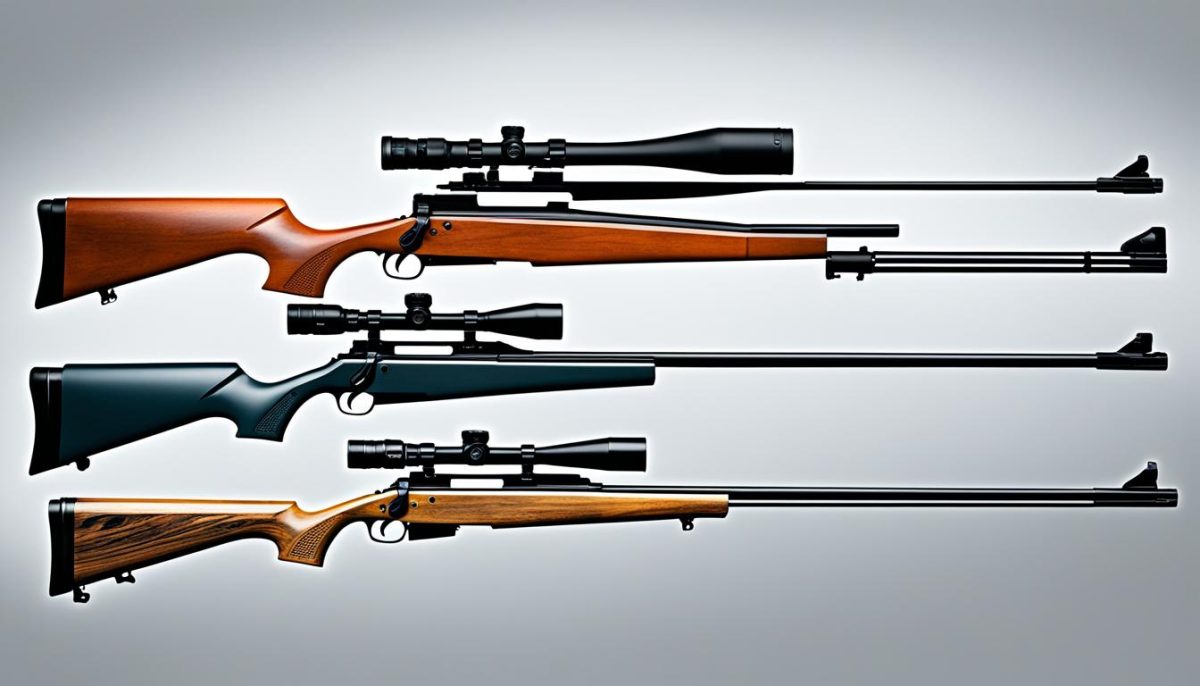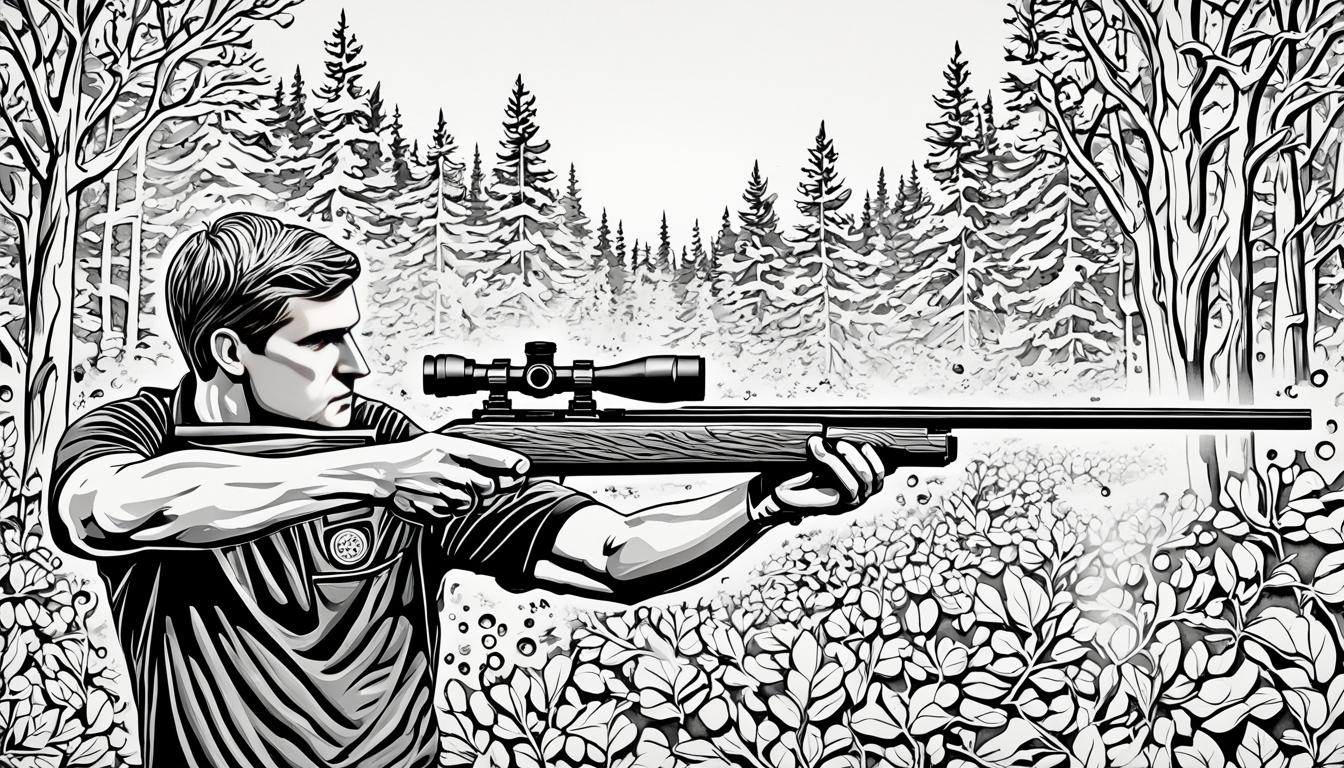Air rifles are a fascinating class of firearms that harness the power of compressed air or gas to propel projectiles. Unlike traditional guns that rely on explosive gunpowder, these versatile tools utilize the controlled release of compressed air or CO2 to launch small pellets or BBs. Whether you’re an avid target shooter, a backyard plinker, or a responsible pest control enthusiast, air rifles offer a unique and engaging way to enjoy the shooting sports.
In this article, we’ll delve into the mechanics, types, and benefits of air rifles, empowering you with the knowledge to make informed decisions about this captivating category of firearms. From understanding the science behind pneumatic and CO2-powered systems to exploring the wide range of air rifle variations, we’ll cover the essential aspects that make these guns a popular choice among shooting enthusiasts. So, let’s dive in and uncover the world of air rifles!
Understanding the Mechanics of Air Rifles
When it comes to air rifles, the mechanics behind their operation are as fascinating as the shooting experience itself. These versatile firearms utilize a range of mechanisms to generate the necessary power to propel their projectiles, each with its own unique advantages. Let’s dive into the world of air rifle mechanics and explore the intricacies of pneumatic and CO2-powered air rifles.
Pneumatic Power: Unleashing Compressed Air
Pneumatic air rifles are renowned for their ability to harness the power of compressed air to launch their ammunition. These rifles feature a pump or lever mechanism that allows users to compress air within a chamber. When the trigger is pulled, this compressed air is released, generating the force needed to send the pellet downrange. The amount of air pressure built up during the pumping or cocking process directly influences the velocity and power of the shot, making pneumatic air rifles a popular choice among target shooters and small game hunters.
CO2 Cartridges: Portable Power Sources
In contrast to pneumatic air rifles, CO2 air rifles rely on small, pressurized CO2 cartridges to provide the energy required for firing. These cartridges are easily replaceable, offering a convenient and portable power source for air rifle enthusiasts. When the trigger is pulled, the CO2 is released from the cartridge, creating the pressure necessary to propel the pellet. The consistent and reliable performance of CO2 air rifles has made them a favorite among plinking and recreational shooting enthusiasts.
Understanding the core mechanics of air rifles, whether it’s the compressed air of pneumatic models or the portable power of CO2 cartridges, is crucial for choosing the right air rifle for your needs and mastering its operation. By delving into the inner workings of these fascinating firearms, you’ll be well on your way to becoming a more informed and skilled air rifle enthusiast.
“The real beauty of an air rifle is in its mechanics – the way it transforms the power of compressed air or CO2 into a precisely aimed shot.”
- Pneumatic air rifles offer unparalleled control over power and velocity through their pumping or cocking mechanisms.
- CO2 air rifles provide a convenient and portable power source, making them a popular choice for plinking and recreational shooting.
- Understanding the core mechanics of air rifles is essential for choosing the right model and becoming a more skilled shooter.
What Is An Air Rifle: Types and Variations
When it comes to the exciting world of air rifles, the options are as diverse as the enthusiasts who wield them. From the classic spring-piston designs to the cutting-edge pre-charged pneumatic (PCP) models, air rifles offer a wide range of types and variations to suit every shooter’s needs. In this section, we’ll delve into the different air rifle types, their distinct characteristics, and the factors to consider when choosing the perfect one for your intended use.
Spring-Piston Air Rifles: The Reliable Classics
The spring-piston air rifle is the quintessential choice for many shooters, offering a reliable and affordable option. These air rifles use a powerful mainspring and piston mechanism to propel the pellet downrange. Known for their consistent performance and rugged construction, spring-piston air rifles are a popular pick for target practice, pest control, and casual plinking.
Pre-Charged Pneumatic (PCP) Air Rifles: The Pinnacle of Power
For those seeking the ultimate in power and precision, pre-charged pneumatic (PCP) air rifles are the way to go. These advanced models use a built-in air reservoir, which is pre-charged with high-pressure air, to deliver exceptional velocity and accuracy. PCP air rifles are favored by serious target shooters and hunters who demand the best performance from their equipment.
CO2-Powered Air Rifles: Portable Punch
Convenience and portability are the hallmarks of CO2-powered air rifles. These models use disposable CO2 cartridges to generate the force needed to propel the pellet. Compact and easy to use, CO2 air rifles are a popular choice for casual shooting, plinking, and small-game hunting, where their lightweight and handy design make them a versatile option.
| Air Rifle Type | Key Features | Ideal Applications |
|---|---|---|
| Spring-Piston | Reliable, affordable, consistent performance | Target practice, pest control, casual shooting |
| Pre-Charged Pneumatic (PCP) | Exceptional power and accuracy, high-performance | Serious target shooting, hunting |
| CO2-Powered | Portable, convenient, easy to use | Casual shooting, plinking, small-game hunting |
Regardless of your specific needs and preferences, the air rifle market offers a diverse range of types and variations to choose from. Whether you’re a seasoned shooter or a newcomer to the sport, understanding the unique characteristics of each air rifle type will help you make an informed decision and find the perfect match for your shooting adventures.

“The true joy of an air rifle lies in its versatility – the ability to take on a wide range of targets and challenges with precision and finesse.”
Accuracy and Range: Key Factors to Consider
When it comes to air rifles, accuracy and effective range are crucial factors to consider. The precision and distance capabilities of an air rifle can be influenced by a variety of elements, including the barrel length, rifling, and the type of pellets used. In this section, we’ll delve into the key aspects that contribute to air rifle accuracy and range, as well as explore the different types of pellets and how they can impact the rifle’s performance.
Pellet Types and Their Impact on Performance
The choice of pellet can significantly affect the accuracy and range of an air rifle. Different pellet types have unique characteristics that can influence the rifle’s performance in various ways. Let’s take a closer look at some of the most common pellet types and how they can impact air rifle accuracy and range:
- Round-nose pellets are a popular choice for target shooting and informal plinking. They offer a good balance of accuracy and penetration, making them suitable for a wide range of applications.
- Wadcutter pellets are flat-nosed and designed to create clean, circular holes in paper targets. They are known for their excellent accuracy but have a shorter effective range compared to other pellet types.
- Hollow-point pellets feature a concave tip that expands upon impact, creating a larger wound channel. These pellets are often preferred for hunting or pest control due to their increased stopping power, but they may sacrifice some accuracy at longer ranges.
- Pointed pellets, also known as field point or hunting pellets, are designed for long-range accuracy and penetration. Their streamlined shape allows them to maintain velocity and stability over greater distances, making them a popular choice for hunting and long-range shooting.
When selecting an air rifle, it’s important to consider the intended use and choose the appropriate pellet type that best suits your needs. Experimenting with different pellet varieties can help you find the optimal combination for your air rifle’s accuracy and range performance.
| Pellet Type | Accuracy | Effective Range | Penetration | Recommended Use |
|---|---|---|---|---|
| Round-nose | Good | Moderate | Good | Target shooting, informal plinking |
| Wadcutter | Excellent | Short | Moderate | Target shooting |
| Hollow-point | Good | Moderate | Excellent | Hunting, pest control |
| Pointed | Excellent | Long | Good | Long-range shooting, hunting |
Ultimately, the choice of pellet type will depend on your specific needs and preferences, balancing factors such as accuracy, range, and penetration. Experimenting with different options can help you find the perfect match for your air rifle and your shooting requirements.
“The accuracy and effective range of an air rifle are crucial factors to consider when choosing the right one for your needs.”
Safety Precautions: Responsible Air Rifle Use
Responsible air rifle ownership and operation are paramount. Before handling your air rifle, we recommend familiarizing yourself with local regulations and safety protocols. Proper storage is essential – keep your air rifle unloaded, secured, and away from unauthorized access.
When using your air rifle, always maintain control and awareness of your surroundings. Adhere to safe shooting practices, such as keeping the muzzle pointed in a safe direction and being mindful of your target and what lies beyond it. Regular cleaning and maintenance will ensure your air rifle remains in optimal condition and performs safely.
By prioritizing safety and responsible usage, we can all enjoy the rewarding sport of air rifle shooting. Remember, safety is not just a recommendation, but a commitment to yourself and those around you. Let’s engage in this pastime responsibly and set a positive example for future generations of air rifle enthusiasts.

